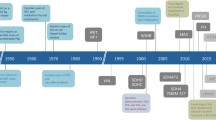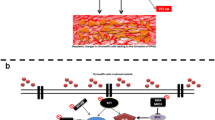Abstract
This review summarizes the way in which inherited mutations define global gene expression in pheochromocytoma (PCC) and paraganglioma (PGL), and how the use of gene expression analysis has advanced our understanding of these diseases. The biology of PCC and PGL tumors is diverse and it has become clear that there is no apparent single biology that defines these tumors. However, over the last 20 years, our understanding of the biology of PGL and PCC has been considerably advanced by the discovery of inherited mutations that predispose individuals to developing the disease. More recently, the use of transcriptomics to stratify tumors based on their gene expression profiles has, in particular, played a vital role in delineating novel mutations involved in the pathogenesis of these tumors. In this review, we describe our current understanding of the biology of cluster 1 (pseudohypoxic) tumors and how mutations that result in the pseudohypoxic phenotype that leads to changes in global gene expression. We also review the advances in our understanding of cluster 2 tumors, and in particular, focus on the newly described MAX tumors.




Similar content being viewed by others
References
Eisenhofer, G., et al., Distinct gene expression profiles in norepinephrine- and epinephrine-producing hereditary and sporadic pheochromocytomas: activation of hypoxia-driven angiogenic pathways in von Hippel-Lindau syndrome. Endocr Relat Cancer, 2004. 11(4): p. 897–911.
Dahia, P.L., et al., Novel pheochromocytoma susceptibility loci identified by integrative genomics. Cancer Res, 2005. 65(21): p. 9651–8.
Huynh, T.T., et al., Transcriptional regulation of phenylethanolamine N-methyltransferase in pheochromocytomas from patients with von Hippel–Lindau syndrome and multiple endocrine neoplasia type 2. Ann N Y Acad Sci, 2006. 1073: p. 241–52.
Burnichon, N., et al., Integrative genomic analysis reveals somatic mutations in pheochromocytoma and paraganglioma. Hum Mol Genet, 2011. 20(20): p. 3974–85.
Lopez-Jimenez, E., et al., Research resource: Transcriptional profiling reveals different pseudohypoxic signatures in SDHB and VHL-related pheochromocytomas. Mol Endocrinol, 2010. 24(12): p. 2382–91.
Waldmann, J., et al., Microarray analysis reveals differential expression of benign and malignant pheochromocytoma. Endocr Relat Cancer, 2010. 17(3): p. 743–56.
Brouwers, F.M., et al., Gene expression profiling of benign and malignant pheochromocytoma. Ann N Y Acad Sci, 2006. 1073: p. 541–56.
Thouennon, E., et al., Identification of potential gene markers and insights into the pathophysiology of pheochromocytoma malignancy. J Clin Endocrinol Metab, 2007. 92(12): p. 4865–72.
Dahia, P.L., et al., A HIF1alpha regulatory loop links hypoxia and mitochondrial signals in pheochromocytomas. PLoS Genet, 2005. 1(1): p. 72–80.
Chi, J.T., et al., Gene expression programs in response to hypoxia: cell type specificity and prognostic significance in human cancers. PLoS Med, 2006. 3(3): p. e47.
Semenza, G.L., Targeting HIF-1 for cancer therapy. Nat Rev Cancer, 2003. 3(10): p. 721–32.
Tian, H., S.L. McKnight, and D.W. Russell, Endothelial PAS domain protein 1 (EPAS1), a transcription factor selectively expressed in endothelial cells. Genes Dev, 1997. 11(1): p. 72–82.
Wang, G.L., et al., Hypoxia-inducible factor 1 is a basic-helix-loop-helix-PAS heterodimer regulated by cellular O2 tension. Proc Natl Acad Sci U S A, 1995. 92(12): p. 5510–4.
Bruick, R.K. and S.L. McKnight, A conserved family of prolyl-4-hydroxylases that modify HIF. Science, 2001. 294(5545): p. 1337–40.
Epstein, A.C., et al., C. elegans EGL-9 and mammalian homologs define a family of dioxygenases that regulate HIF by prolyl hydroxylation. Cell, 2001. 107(1): p. 43–54
Hewitson, K.S., et al., The role of iron and 2-oxoglutarate oxygenases in signalling. Biochem Soc Trans, 2003. 31(Pt 3): p. 510–5.
Favier, J., et al., The Warburg effect is genetically determined in inherited pheochromocytomas. PLoS One, 2009. 4(9): p. e7094.
Gottlieb, E. and I.P. Tomlinson, Mitochondrial tumour suppressors: a genetic and biochemical update. Nat Rev Cancer, 2005. 5(11): p. 857–66.
Astuti, D., et al., Gene mutations in the succinate dehydrogenase subunit SDHB cause susceptibility to familial pheochromocytoma and to familial paraganglioma. Am J Hum Genet, 2001. 69(1): p. 49–54.
Bayley, J.P., et al., SDHAF2 mutations in familial and sporadic paraganglioma and phaeochromocytoma. Lancet Oncol, 2010. 11(4): p. 366–72.
Baysal, B.E., et al., Mutations in SDHD, a mitochondrial complex II gene, in hereditary paraganglioma. Science, 2000. 287(5454): p. 848–51.
Burnichon, N., et al., SDHA is a tumor suppressor gene causing paraganglioma. Hum Mol Genet, 2010. 19(15): p. 3011–20.
Hao, H.X., et al., SDH5, a gene required for flavination of succinate dehydrogenase, is mutated in paraganglioma. Science, 2009. 325(5944): p. 1139–42.
Niemann, S. and U. Muller, Mutations in SDHC cause autosomal dominant paraganglioma, type 3. Nat Genet, 2000. 26(3): p. 268–70.
Selak, M.A., et al., Succinate links TCA cycle dysfunction to oncogenesis by inhibiting HIF-alpha prolyl hydroxylase. Cancer Cell, 2005. 7(1): p. 77–85.
Guzy, R.D., et al., Loss of the SdhB, but Not the SdhA, subunit of complex II triggers reactive oxygen species-dependent hypoxia-inducible factor activation and tumorigenesis. Mol Cell Biol, 2008. 28(2): p. 718–31.
Lando, D., et al., FIH-1 is an asparaginyl hydroxylase enzyme that regulates the transcriptional activity of hypoxia-inducible factor. Genes Dev, 2002. 16(12): p. 1466–71.
Mahon, P.C., K. Hirota, and G.L. Semenza, FIH-1: a novel protein that interacts with HIF-1alpha and VHL to mediate repression of HIF-1 transcriptional activity. Genes Dev, 2001. 15(20): p. 2675–86.
Lisy, K. and D.J. Peet, Turn me on: regulating HIF transcriptional activity. Cell Death Differ, 2008. 15(4): p. 642–9.
Cervera, A.M., et al., Inhibition of succinate dehydrogenase dysregulates histone modification in mammalian cells. Mol Cancer, 2009. 8: p. 89.
Agger, K., et al., The emerging functions of histone demethylases. Curr Opin Genet Dev, 2008. 18(2): p. 159–68.
Lin, T.Y., et al., Loss of the candidate tumor suppressor BTG3 triggers acute cellular senescence via the ERK-JMJD3-p16(INK4a) signaling axis. Oncogene, 2011.
Sola, S., et al., p53 interaction with JMJD3 results in its nuclear distribution during mouse neural stem cell differentiation. PLoS One, 2011. 6(3): p. e18421.
Qin, Y., et al., Germline mutations in TMEM127 confer susceptibility to pheochromocytoma. Nat Genet, 2010. 42(3): p. 229–33.
Segouffin-Cariou, C. and M. Billaud, Transforming ability of MEN2A-RET requires activation of the phosphatidylinositol 3-kinase/AKT signaling pathway. J Biol Chem, 2000. 275(5): p. 3568–76.
Johannessen, C.M., et al., The NF1 tumor suppressor critically regulates TSC2 and mTOR. Proc Natl Acad Sci U S A, 2005. 102(24): p. 8573–8.
Yao, L., et al., Spectrum and prevalence of FP/TMEM127 gene mutations in pheochromocytomas and paragangliomas. JAMA, 2010. 304(23): p. 2611–9.
Zhu, J., J. Blenis, and J. Yuan, Activation of PI3K/Akt and MAPK pathways regulates Myc-mediated transcription by phosphorylating and promoting the degradation of Mad1. Proc Natl Acad Sci U S A, 2008. 105(18): p. 6584–9.
Jimenez, R.H., et al., Regulation of gene expression in hepatic cells by the mammalian Target of Rapamycin (mTOR). PLoS One, 2010. 5(2): p. e9084.
Huang, S.C., et al., Duplication of the mutant RET allele in trisomy 10 or loss of the wild-type allele in multiple endocrine neoplasia type 2-associated pheochromocytomas. Cancer Res, 2000. 60(22): p. 6223–6.
Huang, S.C., et al., Amplification and overexpression of mutant RET in multiple endocrine neoplasia type 2-associated medullary thyroid carcinoma. J Clin Endocrinol Metab, 2003. 88(1): p. 459–63.
Comino-Mendez, I., et al., Exome sequencing identifies MAX mutations as a cause of hereditary pheochromocytoma. Nat Genet, 2011. 43(7): p. 663–7.
Zhang, X., et al., Maternally expressed gene 3, an imprinted noncoding RNA gene, is associated with meningioma pathogenesis and progression. Cancer Res, 2010. 70(6): p. 2350–8.
Astuti, D., et al., Epigenetic alteration at the DLK1-GTL2 imprinted domain in human neoplasia: analysis of neuroblastoma, phaeochromocytoma and Wilms' tumour. Br J Cancer, 2005. 92(8): p. 1574–80.
Pantoja, C., et al., Inactivation of imprinted genes induced by cellular stress and tumorigenesis. Cancer Res, 2005. 65(1): p. 26–33.
Zhang, X., et al., A pituitary-derived MEG3 isoform functions as a growth suppressor in tumor cells. J Clin Endocrinol Metab, 2003. 88(11): p. 5119–26.
Zhao, J., et al., Hypermethylation of the promoter region is associated with the loss of MEG3 gene expression in human pituitary tumors. J Clin Endocrinol Metab, 2005. 90(4): p. 2179–86.
Author information
Authors and Affiliations
Corresponding author
Additional information
For submission for the Proceedings of the 3rd International Symposium on Pheochromocytoma and Paraganglioma
Rights and permissions
About this article
Cite this article
Cascón, A., Tennant, D.A. From Transcriptional Profiling to Tumor Biology in Pheochromocytoma and Paraganglioma. Endocr Pathol 23, 15–20 (2012). https://doi.org/10.1007/s12022-012-9195-x
Published:
Issue Date:
DOI: https://doi.org/10.1007/s12022-012-9195-x




